History of Italian Renaissance Art
Wilkins
Long hailed as one of the most comprehensive and richly detailed chronologies of painting, sculpture and architecture in Renaissance Italy from, this book focuses on works of art, their creators and the circumstances affecting their creation. The book is organized, chronologically, with individual chapters dedicated to developments in different areas or cities, such as Florence, Tuscany, Rome, Venice and Northern Italy. David G. Wilkins has maintained Hartt’s distinctive voice and formalist approach while adding contextual detail that will enrich the reader’s understanding and reflect the latest thinking in the field.NEW-A number of illustrations that enrich students' understanding of important Renaissance works have been added, including: Views of architecture and of large cycles and programs that remain in situ. Three of the digitized reconstructions that were added to the fifth edition have here been revised and redone in splendid color by Lew Minter (see figs. 4.3, 4.5, 9.4, 11.13), with the assistance of Emily Gillespie and Kelly Murray. Increased the number of secular works by adding a cassone with its original framework largely intact (see fig. 13.17), an early desco da parto made for the Medici family (see fig. 11.19), three examples of majolica dinnerware (see figs. 15.28, 17.75, 20.37), and two additional portrait medals (see figs. 10.2, 15.6-15.7). Added more media. A broader look at the way in which works of art functioned in Renaissance society has revealed the importance of other media besides marble and bronze for sculpture and fresco, tempera, and oil for painting. In this edition you will find the addition of a polychromed terracotta group (see fig. 15.67) of the type found in many Italian churches, a manuscript illumination (see fig. 14.34), a tapestry woven in the Netherlands to a design by Raphael (see fig. 17.57), an enameled reliquary (see fig. 4.35), and several examples of Renaissance prints (see figs. 6.5, 13.29, 17.59, 20.51). More examples of the ancient works that inspired the Renaissance, such as an ancient sarcophagus (see fig. 2.25) and an ancient cameo (see fig. 12.2) owned by Lorenzo de' Medici, as well as Renaissance views of the two great monuments of ancient Rome that were constantly in the minds of Renaissance architects: the Pantheon (see fig. 1.2) and the Colosseum (see fig. 1.3). A photograph of the marble quarries at Carrara (see fig. 1.15) suggests the difficulties Michelangelo faced in finding the quality of marble that he felt was necessary for his works. NEW-A series of portraits of patrons and personalities of the period. Enrich students' knowledge of the context within which these works were created. Approaches works of art from the point of view of the artist. The emphasis is on the artist as a creative personality. The text emphasizes the role of the individual artist during a period when individuality was becoming more important in culture, society and business. Uses evocative and poetic language in order to help see the works of art as Hartt saw them. Hartt's words send the reader back for another, closer look at each piece of art.Presents the individual work of art in its context of contemporary history. Shows how it fulfilled specific needs on the part of artist and patron, and how its meaning was intended to be interpreted. Paintings and sculptures that are still in their original settings-with the exception of obvious examples of frescoes, mosaics, and façade sculptures-are indicated by a Q in the captions. For works today in private collections or museums, the original locations can be found in the captions. Recognizes that location was an important consideration in the design of Rennaisance works of artDiscussion of the revolutionary figures and major movements of the period-Includes the masters as well as scores of minor artists. Helps students to grasp the shape of the Renaissance period as a whole.Career biographies of over 100 major artists. Gives students an understanding of individual accomplishments as well as the larger picture.Renaissance philosophical, scientific, religious, political, and metaphysical ideas are explored in relation to works of art and architecture. Places Renaissance art in the context of the larger social, religious, and political milieu of the day.Restored and cleaned works of art and architecture are re-examined and re-illustrated in light of new discoveries. Demonstrates the ongoing importance of studying these timeless works.Expanded captions-Include patron's names; icon signifying that a work has been painted for that site; and original locations, when known, of works now in museums or private collections. Provides students with a sense of the work of art as an object with its own history. A sensitive edit of the most complex and florid passages to convey Professor Hartt's meaning and connoisseurship-while insuring greater clarity. Assures student understanding while preserving Professor Hartt's distinctive voice.Expanded glossary-Includes references to figure numbers. Enhances students understanding by applying vocabulary to specific objects.Updated bibliography. Allows students to pursue additional study in areas of interest.NEW ILLUSTRATIONS ADDED TO HARTT AND WILKINS, HISTORY OF ITALIAN RENAISSANCE ART, 6TH EDITION, 2006 Examples of ancient Roman works that inspired Renaissance artists: 1.2 Pantheon in Rome1.3 Colosseum in Rome2.25 Phaedra Sarcophagus at the Camposanto in Pisa12.2 Tazza Farnese, an ancient cameo Views of works of art in situ2.18 View of the frescoes in the Upper Church at Assisi3.19 View of the crossing area of Santa Croce with frescoes3.29 View of the Baroncelli Chapel by Taddeo Gaddi with altarpiece by Giotto workshop4.12 View of the Council Chamber in the Palazzo Pubblico in Siena4.15 View of Simone Martini's frescoes in the St. Martin Chapel at Assisi4.20 View of the side wall of the Collegiata in San Gimignano, with frescoes5.2 View of the Strozzi Chapel with frescoes by Nardo di Cione and altarpiece by Orcagna5.15 View of the frescoes in the St. Felix Chapel at Sant'Antonio in Padua9.14 View of Fra Filippo Lippi's fresco cycle at the Cathedral in Prato12.1 View of the Benozzo Gozzoli cycle at the Medici Palace13.41 View of Ghirlandaio's frescoes in the Tornabuoni Chapel at S. Maria Novella14.7 View of the frescoes in the Pellegrinaio in Siena14.16 View of the frescoes on the side wall of the Sistine Chapel in Rome15.44 Thomas Struth photograph of Bellini San Zaccaria Altarpiece in context15.45 View of the Carpaccio room at the Accademia in Venice18.18 View of the frescoes in the atrium of SS. Annunziata in Florence18.28 Pontormo, view of the Capponi Chapel19.46 Tintoretto, view of the Last Supper in context at S. Giorgio Maggiore, Venice19.49 View of Veronese's frescoes at Villa Maser in context20.40 View of the studiolo in the Palazzo Vecchio Paintings1.5 Duccio, Madonna and Child, recently bought by the Metropolitan Museum of Art5.17 Altichiero, Crucifixion11.19 Desco da parto made for Lorenzo il Magnifico13.17 Cassone by Jacopo del Sellaio14.25 Angel detail from Melozzo da Forli's Ascension17.47 Raphael, School of Athens, full view17.48 Raphael, Disputŕ, full view18.43 Correggio, detail of the Camera di San Paolo20.33 Bronzino, Portrait of E. da Toledo and her Son20.45 Lavinia Fontana, Noli Me Tangere Sculpture3.33 Andrea Pisano bronze doors for the Baptistery7.22 Siena Baptismal Font7.23 Jacopo della Quercia, drawing for the Siena Fonte Gaia15.67 Polychromed terracotta Nativity by Mazzoni16.38 Michelangelo, drawing for the copy of Donatello's bronze David20.24 Ammanati, Neptune Fountain Architecture2.29 Interior view of Siena Cathedral4.34 View of Orvieto Cathedral façade5.20 Interior of Milan Cathedral10.6 Loggia of the Ruccellai family15.52 Venice, Arsenale Gateway15.54 Venice, Scuola Grande di San Marco17.14 Plan of St. Peter's in Rome19.59 Detail of Sansovino's decorative work in the Pellegrini Chapel19.61 Sansovino, Loggetta, Venice20.13 Michelangelo, plan of the Campidoglio Other arts4.35 Reliquary of the Holy Corporal by Ugolino di Verio6.3 Reverse of the medal of Cosimo de'Medici10.2 Alberti, Self-portrait medal13.29 Print from Savonarola's Art of Dying Well14.34 Manuscript illumination15.6 Pisanello, Portrait medal of Cecelia Gonzaga15.7 Pisanello, reverse of medal of Cecelia Gonzaga15.28 Majolica plate17.57 Raphael (design), Tapestry with the Conversion of St. Paul17.59 Raimondi (after Raphael), Print with the Judgment of Paris17.75 Majolica plate20.37 Majolica plate20.51 Sixtus V's additions to Rome, a print Newly digitized reconstructions in color:4.3 Duccio Maesta, front4.4 Duccio Maesta, back11.13 Castagno's Famous Men and Women cycle15.41 Giovanni Bellini's San Giobbe Altarpiece with its frame Others1.15 View of the marble quarries at Carrara*2.20 Copy of Cavallini's restoration of a fresco at St. Paul's Outside the Walls6.4 Drawing by Leonardo da Vinci to demonstrate perspective6.5 Vignola, Print demonstrating perspective In other words, there are 4 new illustrations of ancient works, 20 new views of works of art in context, 10 new illustrations of paintings, 6 new examples related to sculpture, 10 new examples related to architecture, 13 new examples of works in other media (3 prints, 4 portrait medals and/or reverses, 1 enameled reliquary, 1 manuscript illumination, 3 examples of majolica), and 4 new digitized reconstructions in color.
więcej
Informacje dodatkowe o History of Italian Renaissance Art:
Wydawnictwo: angielskie
Data wydania: b.d
Kategoria: Albumy
ISBN:
Liczba stron: 0
Kup książkę History of Italian Renaissance Art
Sprawdzam ceny dla ciebie ...
Cytaty z książki
REKLAMA
Zobacz także
History of Italian Renaissance Art - opinie o książce
Inne książki autora
Experimental Therapeutics
Zobacz wszystkie książki tego autora
0
The development and use of new medicines remains a formidable challenge. In 2001, the pharmaceutical industry spent $44 billion on research and development...

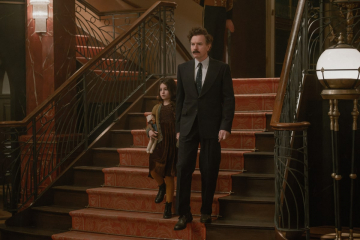
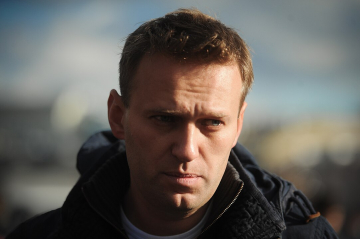
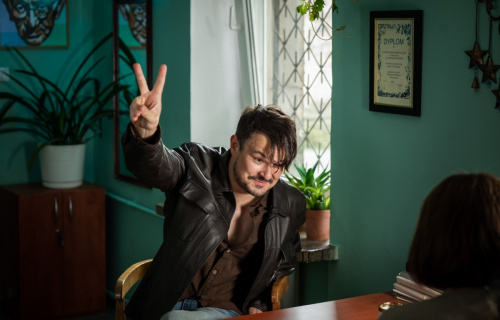
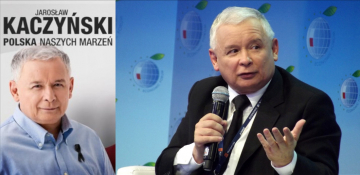
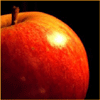











Chcę przeczytać,